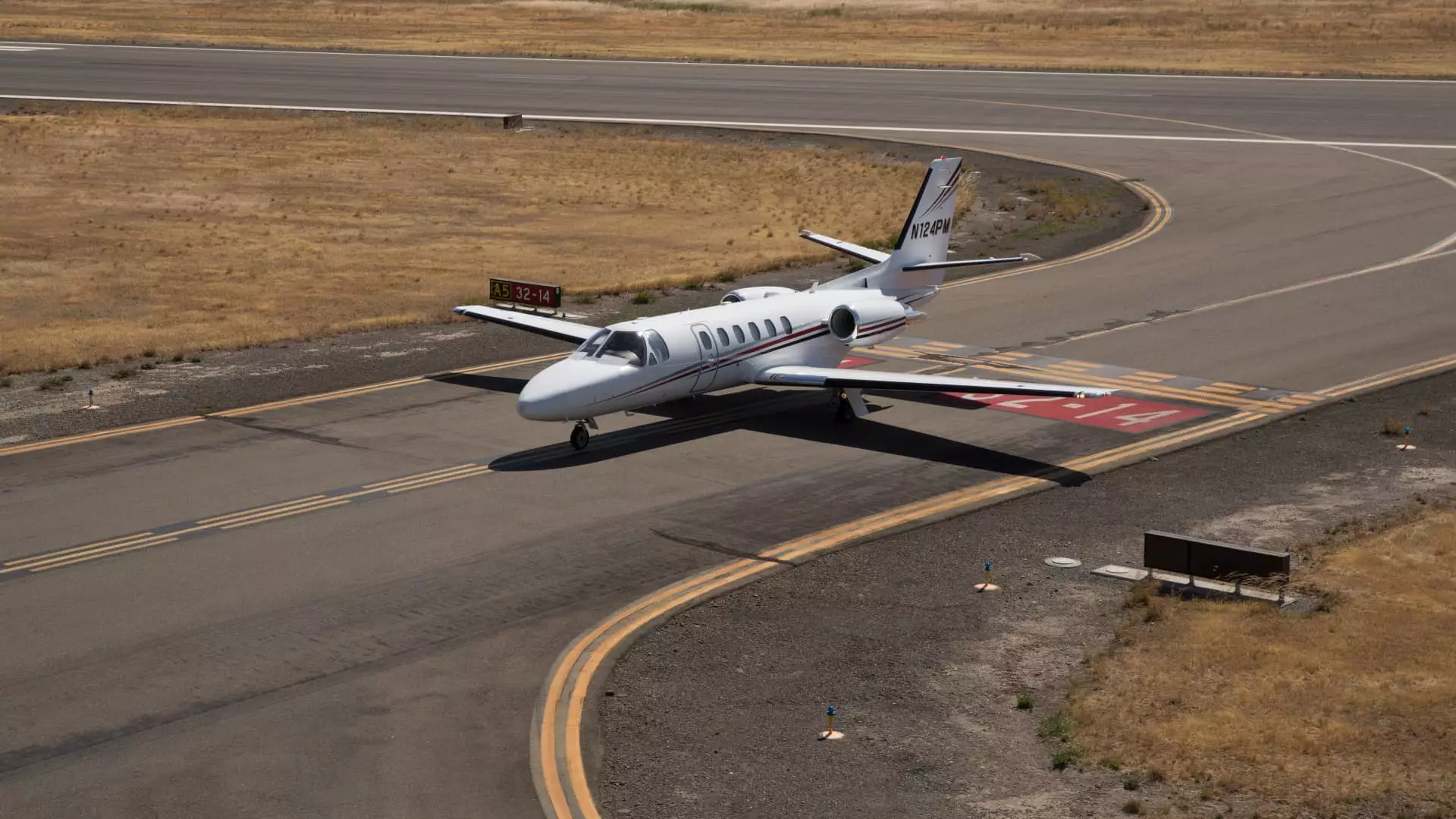Recent surveys indicate a dramatic downturn in consumer confidence, which, unsurprisingly, has hit the aviation sector hard. According to a report from Barclays, even those individuals willing to spend substantial sums on business jets are tightening their belts. Their latest survey, conducted with 65 brokers and financiers between April 9 and 15, reveals a staggering 49% decrease in consumer interest in purchasing business jets since March. This slump is not merely a statistical anomaly; it signifies a wider reevaluation of priorities among affluent consumers who once prioritized luxury travel.
The Barclays Business Jet Indicator, which gauges market conditions through five distinct metrics—ranging from future outlook to pricing—showed that virtually every single metric declined except for inventory levels. The composite score slipped dramatically from 52 to 40, representing a 23% decline, which is the steepest drop noted by Barclays since the onset of the COVID-19 pandemic. Analysts maintain that a composite score in the low 40s reflects a market in decline, signaling trouble ahead for manufacturers and brokers alike.
The Impact of Tariffs on the Industry
What’s driving this shift in market sentiment? A significant concern among consumers appears to be the looming issue of tariffs, with nearly half of the survey participants pointing to this as a reason for stalling purchases. The fear of increased operational costs, alongside the destabilization of their businesses by tariffs, has resulted in many potential buyers opting to delay their acquisitions. A staggering 93% of respondents asserted that tariffs would negatively impact both new and used aircraft demand, with many anticipating that the effects would be quite pronounced.
As regulations and trade policies change, the conversation about tariffs becomes essential to understanding how the business jet market functions. For business owners, buying an aircraft is not just about a personal investment; it’s also about operational efficiency and customer service. If tariffs threaten to raise costs significantly, decision-makers are forced to rethink their procurement strategies.
The Used Aircraft Market: A Mixed Forecast
While consumer confidence in new jets remains shaky, opinions diverge when it comes to the used aircraft market. Notably, almost two-thirds of brokers and financiers surveyed expressed pessimism, expecting either a minimal or significant decline in demand for pre-owned jets. Interestingly, around 27% of respondents are optimistic, predicting a rise in demand for used aircraft. This divide hints at an underlying complexity in buyer psychology; uncertainty in the new jet market could compel savvy buyers to explore secondhand options, particularly if they seek value without compromising on quality.
Potential Relief: Legislative Moves on the Horizon
Amidst this chaos, there may be a glimmer of hope on the legislative front. Recent developments suggest that both the Senate and the House of Representatives are leaning toward a budget resolution intended to extend provisions of the Tax Cuts and Jobs Act. Specifically, a critical stipulation in this act permits businesses to deduct 100% of eligible equipment purchases upfront. If reformulated effectively, this could mean substantial financial relief for jet manufacturers. The potential restoration of this tax benefit could spur interest among businesses reevaluating their travel needs and looking for advantageous tax strategies.
A pathway has seemingly opened for lawmakers to not only restore full deductions but also to retroactively apply them. This could rejuvenate the market and potentially alter consumer sentiment, making business jets more financially appealing once again.
Looking Ahead: The Path to Resilience
As the market stands at a crossroads, the ability of both manufacturers and financial brokers to adapt will be crucial. They must navigate these turbulent waters by addressing consumer concerns, particularly around tariffs, while also capitalizing on any legislative incentives that may potentially stimulate demand. As uncertainties linger, the aviation industry must refocus on innovation and customer engagement to reassure potential buyers, thereby revitalizing interest in what was once seen as a vital sector for business travel.
The road to recovery may be long and fraught with challenges, but with strategic insights and swift legislative actions, there remains hope for an upswing in the commercial air travel landscape. The industry must not only weather the current storm but also emerge with renewed vigor, eager to meet the evolving demands of a cautious and increasingly discerning consumer base.


Leave a Reply